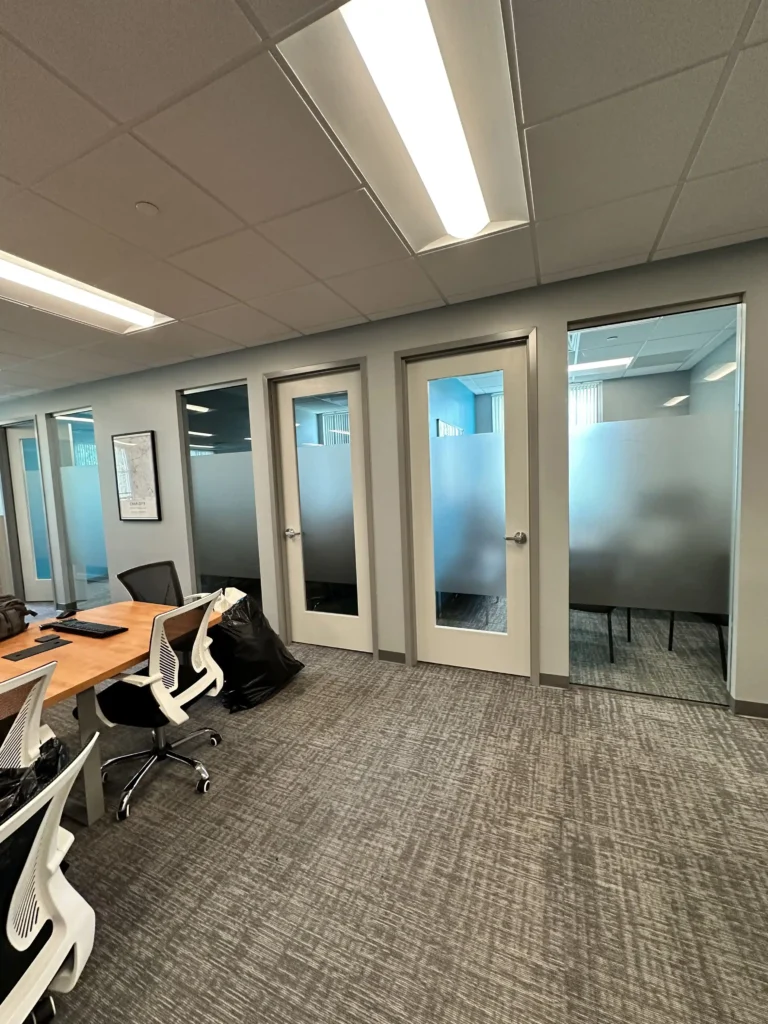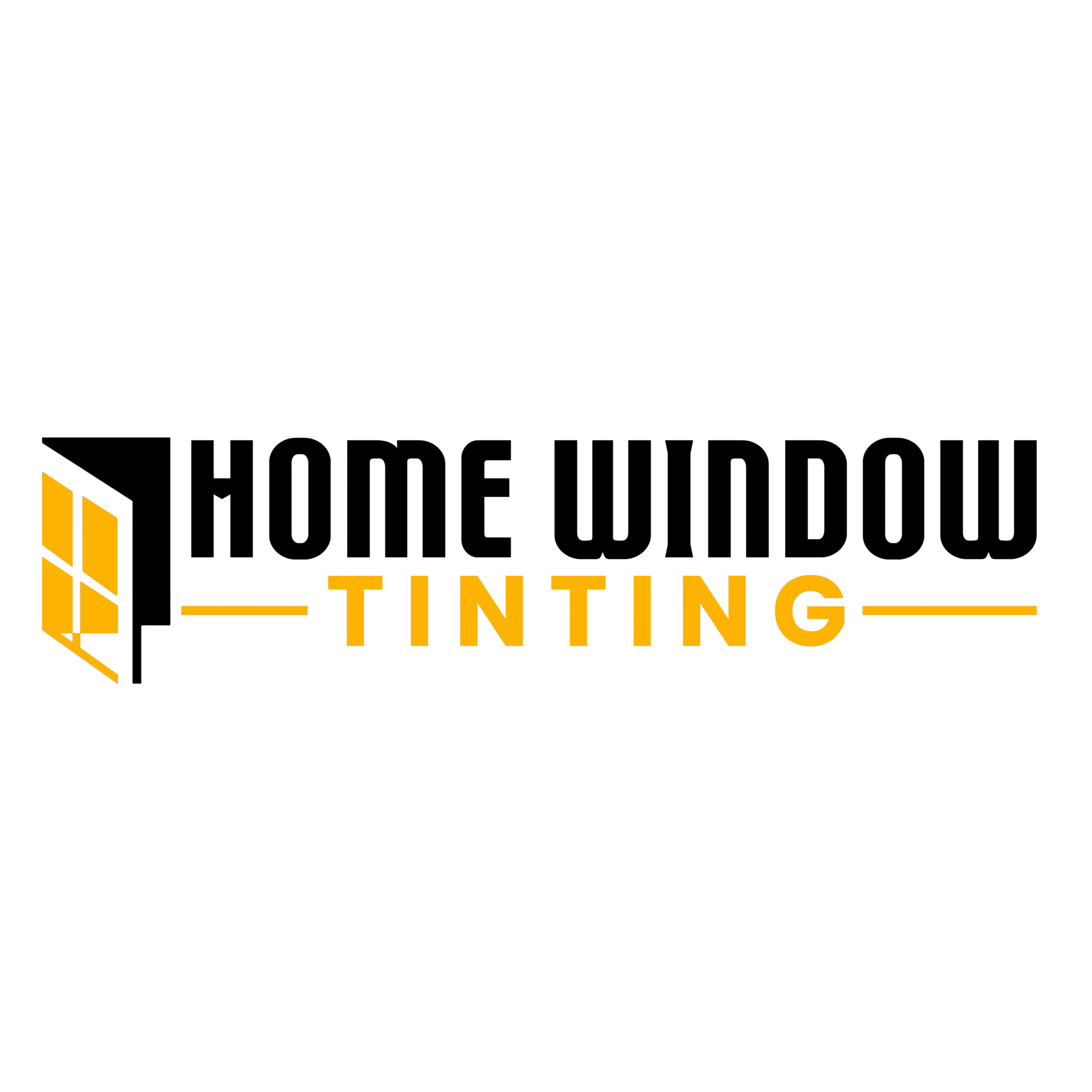Privacy Window Film Options: Frosted Film's Effectiveness Against Prying Eyes

When it comes to enhancing privacy in your home or office, privacy window films have become increasingly popular options. These films provide an effective way to block unwanted views while still allowing natural light to filter through.
Frosted window film is highly effective at preventing prying eyes from seeing inside, offering approximately 95% visual privacy while still maintaining good light transmission. The translucent nature of frosted film diffuses light and creates a blurred effect that makes it virtually impossible to discern clear details from the outside.
Homeowners in Miami have been turning to specialized services like Home Window Tint Miami for professional installation of privacy films. Their frosted film options range from completely opaque to partially obscured designs that can be customized to match specific privacy needs and aesthetic preferences.
Understanding Privacy Window Film Options
Privacy window films offer homeowners an effective way to maintain privacy while still allowing natural light to enter their spaces. These versatile solutions come in various types with different properties that impact their effectiveness depending on lighting conditions and installation location.
Types of Privacy Films for Residential Use
Frosted films provide a translucent appearance that diffuses light while blocking clear visibility. They create an etched or sandblasted glass effect without the permanent commitment or expense.
Decorative films combine privacy with aesthetic appeal through patterns, designs, or textures. These options range from simple lines to elaborate motifs that can complement home décor while obscuring views.
One-way mirror films (also called reflective films) create a mirror effect on the brighter side of the window. During daylight hours, outsiders see a reflective surface while insiders maintain their view.
Blackout or opaque films block nearly 100% of visibility and most light transmission. These provide maximum privacy but significantly reduce natural light.
Gradient films transition from opaque to transparent, allowing homeowners to block views at eye level while maintaining visibility at the top or bottom of windows.
How Privacy Films Work to Block Views
Privacy films employ different mechanisms to obstruct visibility. Frosted and textured films scatter light as it passes through microscopic particles or patterns embedded in the film. This diffusion prevents clear images from forming when looking through the window.
Reflective films contain metallic particles that bounce light away from the window. The reflective property creates a mirror-like effect when light conditions are brighter on one side than the other.
The effectiveness of these films is measured by visible light transmission (VLT) percentages. Lower VLT percentages (15-30%) provide greater privacy but reduce natural light, while higher percentages (70-80%) maintain brightness but offer less privacy.
Most quality films also block UV rays, providing additional benefits beyond privacy. This UV blocking helps protect furniture and flooring from sun damage and fading.
Daytime Versus Nighttime Privacy Considerations
Privacy film effectiveness often changes dramatically between day and night. During daylight hours, most privacy films work well because exterior light is stronger than interior light. This lighting differential helps films like one-way mirror types perform optimally.
At night, the situation reverses. When interior lights are on and it’s dark outside, the privacy effect may diminish significantly. Reflective films can become transparent from the outside, allowing people to see in clearly.
Frosted and patterned films maintain more consistent privacy regardless of lighting conditions. They provide 24-hour protection by physically diffusing light rather than relying on reflection.
For comprehensive day and night privacy, combining window films with blinds or curtains offers the best solution. Alternatively, specialized dual-effect films that maintain privacy in varying light conditions are available, though typically at higher price points.
Effectiveness of Frosted Film for Privacy
Frosted window film provides a significant level of privacy while still allowing natural light to filter through. The effectiveness varies based on several factors including film quality, installation technique, and environmental conditions.
Levels of Opacity and Coverage
Frosted window films come in various opacity levels ranging from 30% to 100%. Higher opacity percentages offer greater privacy but reduce light transmission proportionally. Standard residential frosted films typically provide 70-85% opacity, which prevents clear visibility while maintaining adequate natural light.
The coverage area matters significantly for privacy effectiveness. Films must extend to all edges of the glass surface to prevent gaps where visibility might be possible. Properly installed frosted film covers the entire glass surface and adheres without air bubbles or wrinkles that could compromise privacy.
Light conditions affect privacy levels substantially. During daylight hours, frosted film performs excellently from outside looking in. However, at night with interior lights on, the privacy effect can diminish by approximately 15-20% depending on the film quality.
Real-World Performance in Preventing Intrusion
In practical applications, frosted film creates an effective visual barrier against casual observation. From a distance of 3-5 feet, figures behind frosted film appear only as indistinct shadows rather than recognizable shapes.
The film’s texture disrupts light refraction, making it impossible to see clear details through the glass. This disruption works in both directions, creating mutual privacy for both sides of the treated window.
Weather conditions minimally impact frosted film’s privacy performance. Rain or condensation on windows can sometimes slightly reduce effectiveness, but quality films maintain approximately 90% of their privacy capability even in these conditions.
Professional installation ensures optimal privacy performance. Companies like Home Window Tint Miami specifically recommend proper surface preparation and application techniques to maximize the film’s privacy capabilities in South Florida’s bright light conditions.
Comparing Frosted Film With Other Privacy Solutions
| Privacy Solution | Privacy Level | Light Transmission | Cost Range | Durability |
|---|---|---|---|---|
| Frosted Film | High | Medium | $5-15/sq ft | 5-10 years |
| Curtains/Blinds | Adjustable | Adjustable | $10-50/sq ft | 3-7 years |
| Textured Glass | Permanent | Medium | $20-40/sq ft | Lifetime |
| One-way Mirror | Conditional | Low-Medium | $8-20/sq ft | 5-8 years |
Frosted film offers better overall privacy than one-way mirror film, which only works effectively when light levels are higher on the viewing side than the private side. Unlike curtains or blinds, frosted film provides 24/7 privacy without requiring adjustment.
The static nature of frosted film presents both advantages and limitations. While it cannot be adjusted like blinds or curtains, it requires no maintenance beyond occasional cleaning and provides consistent privacy without mechanical parts that might fail.
Frosted film strikes an effective balance between privacy and natural light compared to solutions like blackout curtains or solid window coverings. It blocks view while still allowing approximately 70-80% of available light to enter the space.
Choosing the Right Frosted Film for Your Needs
Selecting the optimal frosted window film requires consideration of several factors including thickness, design, and proper installation techniques to achieve maximum privacy protection.
Selecting the Appropriate Thickness and Design
Frosted film comes in various thicknesses, typically ranging from 2-4 mil for residential use and 6-8 mil for commercial applications. Thicker films generally provide better privacy and durability but may be more challenging to install.
Static cling films offer easy installation and removal, making them ideal for renters. Adhesive-backed films provide more permanence and typically last longer, often 5-7 years with proper care.
Design options include completely frosted, partially frosted with patterns, or decorative designs that maintain privacy while adding aesthetic appeal. For maximum privacy, Home Window Tint Miami recommends their 4 mil completely frosted option, which blocks 95% of visibility while still allowing light transmission.
Different textures can create various effects – from rice paper appearance to etched glass simulation. Each texture offers unique privacy levels and light diffusion properties.
Installation Tips for Maximum Privacy
Professional installation ensures optimal privacy protection and longevity. Home Window Tint Miami (786-527-2368) offers expert installation services with guaranteed results that eliminate bubbles and edge peeling issues common with DIY applications.
For DIY installation, thoroughly clean windows with ammonia-free cleaners before application. Use a spray solution of mild soap and water to prevent the film from adhering prematurely during positioning.
Apply film from top to bottom, using a squeegee to remove air bubbles working from center outward. Trim edges after application leaving a 1/16 inch gap around the perimeter to prevent peeling.
Overlap seams by at least 1/8 inch when covering large windows with multiple film pieces. This prevents privacy gaps that can occur as the film settles.
Install films on the interior surface of windows for maximum durability and protection from external elements. This positioning extends the film’s lifespan by up to 30%.
Frequently Asked Questions
Privacy window films offer solutions for various lighting conditions, property types, and aesthetic preferences. These films differ in their opacity, light transmission, application methods, and maintenance requirements.
What are the best types of privacy window films available in the market?
The market offers several high-quality options including frosted films, one-way mirror films, decorative patterns, and ceramic window films, with each providing different levels of privacy and light filtration.
What degree of privacy can one expect from one-way privacy window films during daytime and nighttime?
One-way films provide excellent daytime privacy but become less effective at night when interior lights are on, potentially requiring additional window treatments for 24-hour privacy.
How does frosted film compare to blackout film in terms of light transmission and privacy?
Frosted film diffuses light while maintaining privacy and allowing 70-80% light transmission, whereas blackout film blocks nearly all light and visibility for maximum privacy.
Can frosted window films be applied to any glass surface and are they removable?
Most frosted films adhere to clean, smooth glass surfaces including windows, shower doors, and office partitions, and quality films from providers like Home Window Tint Miami can be removed without damaging the glass.
Are there any visibility differences with frosted privacy films when indoor and outdoor lighting conditions change?
Frosted films maintain consistent privacy regardless of lighting conditions, unlike one-way films, though extremely bright direct lighting may slightly reduce their effectiveness.
What maintenance is required to keep frosted glass films effective over time?
Frosted films require minimal maintenance—just occasional cleaning with non-abrasive cleaners and soft cloths to avoid scratching, and addressing any edge peeling promptly will ensure longevity.

